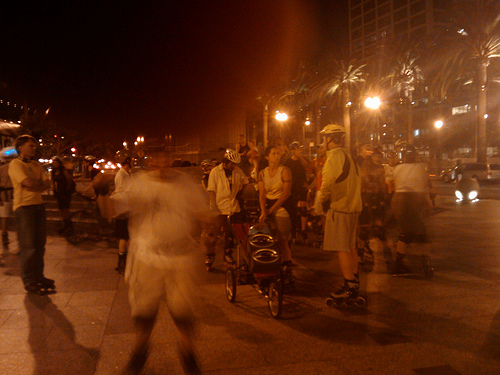Communities lives and die by its core members that define the rules and norms for it at any given time. They’re often very fluid and can change rules almost on a weekly basis, it’s more often a much slower process.
During the summer I joined (offline) community that is different from my usual one – the Roller Skating community of San Francisco Friday Night Skate. In comparison to skating groups of Ljubljana, where we seem to have a shared purpose of recreational skating, here the idea is of a rolling party that just happens to involve roller skating.
The difference in shared purpose is easily seen in the little things, like what people actually talk about. While one group talks mostly sports, where they went over the weekend (to do sports), what kind of form are they in and their achievements; the other group goes out of its way to organize roller disco events, dress up in flashy clothes, brings their own boom-box along and spends a month of planning a roller disco camp in a middle of a desert as a part of Burning Man festival.
Lesson learned
There’s nothing wrong with either community, but it helps a lot to have an idea of what you want to do so potential members can figure out if your group is right for them.
Groups can usually easily fork out if they want to, but they still need to elaborate their shared purpose and if it’s a fork – how and why is this group different from the first one. (Notice that it’s not “better”, it’s just different).
